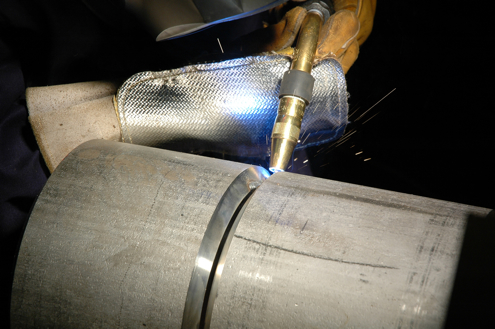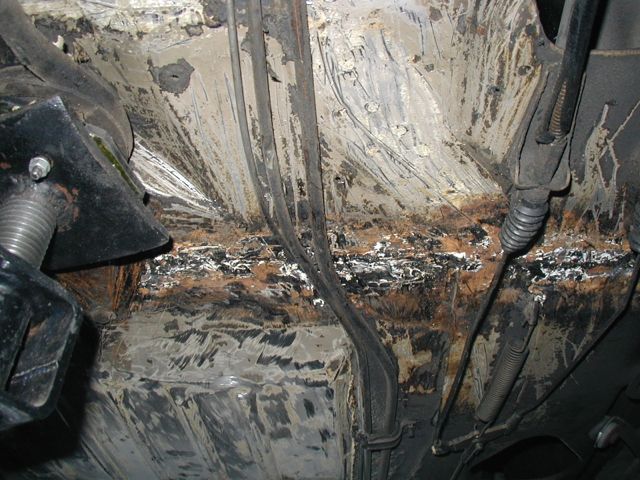Typical Welding Fixing Issues and How to Address Them Successfully
Welding repairs often experience a range of problems that can threaten the honesty of the final item. Common troubles include insufficient infiltration, porosity, and imbalance, amongst others. Each flaw offers special obstacles that need certain techniques for resolution. Understanding these problems is vital for welders aiming to enhance their end results and skills. This discussion will certainly discover these common welding repair work concerns and effective techniques to resolve them.
Inadequate Penetration
Inadequate infiltration happens when the weld metal stops working to fully fuse with the base material, causing weak joints and prospective structural failures. This issue frequently stems from insufficient warmth input, wrong electrode angle, or inappropriate welding rate. Welders might experience inadequate penetration as a result of a mistake of the needed criteria for a particular product thickness or type. In addition, contamination on the base material's surface area can hinder efficient bonding, intensifying the problem. To address insufficient infiltration, welders ought to guarantee ideal setups on their devices and keep a tidy job surface area. Regular assessment of welds is suggested to determine any kind of shortages early, enabling for timely modifications and the avoidance of jeopardized structural stability in bonded assemblies.
Porosity
Porosity is a typical issue in welded joints that materializes as tiny gas bubbles caught within the weld steel. This defect can compromise the integrity of the weld, bring about lowered strength and prospective failing under tension. Belgrade. Porosity typically develops from contamination, dampness, or improper welding methods, which allow gases to leave right into the liquified weld pool. To resolve porosity, welders ought to guarantee correct surface area prep work, maintain a tidy workplace, and use appropriate welding specifications. In addition, picking the ideal filler material and protecting gas can minimize gas entrapment. Regular assessment and testing of welds can assist identify porosity early, guaranteeing timely restorative actions are taken, thus protecting the quality and reliability of the welded framework
Misalignment
Imbalance in welding can arise from various aspects, consisting of improper setup and thermal expansion. Understanding the origin is crucial for reliable resolution. Numerous correction techniques are readily available to straighten parts and assure architectural stability.
Reasons of Imbalance
Welding misalignment commonly comes from a selection of underlying issues that can jeopardize structural honesty. One primary reason is incorrect fit-up of elements before welding, which can bring about voids and irregular surface areas. Variations in thermal development throughout the welding procedure can additionally result in distortion, particularly if the products being joined have various coefficients of growth. In addition, poor fixturing and clamping might fail to hold parts firmly in place, resulting in movement throughout welding. Improperly conserved equipment, including welding equipments and tools, might introduce disparities in the weld bead, further adding to imbalance. Ultimately, operator mistake, coming from inadequate training or experience, can additionally play a substantial duty in developing misaligned welds.
Adjustment Strategies Available
Resolving misalignment effectively needs a combination of rehabilitative strategies tailored to the specific problems handy. One common technique is making use of jigs or fixtures to hold parts in the appropriate position throughout welding, making certain consistent placement. Furthermore, pre-heating the products can help in reducing distortion and boost fit-up. For significant imbalance, mechanical realignment strategies, such as utilizing hydraulic jacks or clamps, can be used to deal with the setting before welding. Post-weld warmth therapy might additionally be needed to alleviate stresses triggered by misalignment. Lastly, cautious evaluation and change during the setup stage can prevent imbalance concerns from coming to be considerable problems, promoting a smoother welding procedure and improving overall architectural integrity.
Distortion
Distortion is an usual difficulty in welding that can develop from different factors, including uneven heating & cooling. Understanding the root causes of distortion is important for applying effective prevention techniques. Resolving this issue not just improves architectural integrity but likewise boosts the total top quality of the weld.
Root causes of Distortion
When subjected to the extreme heat of welding, materials commonly go through changes that can result in distortion. This phenomenon primarily occurs from thermal growth and contraction during the welding procedure. As the weld location warms up, the product expands; upon air conditioning, it contracts, which can produce internal stresses. In addition, unequal heating across a workpiece can exacerbate these stresses, resulting in bending or flexing. The type of material also plays a considerable function; steels with varying thermal conductivity and coefficients of expansion might react differently, resulting in unpredictable distortions. In addition, poor joint style and insufficient fixturing can contribute to imbalance during welding, boosting the likelihood of distortion. Understanding these causes is essential for efficient welding repair work and prevention methods.
Prevention Techniques
Effective prevention strategies for distortion throughout welding concentrate on regulating heat input and ensuring appropriate joint design. Maintaining a constant warm input assists to decrease thermal development and tightening, which can cause distortion. Utilizing methods such as preheating the index work surface can additionally minimize the temperature level gradient, promoting consistent home heating. Furthermore, choosing suitable joint designs, such as T-joints or lap joints, can boost stability and minimize anxiety focus. Carrying out appropriate fixturing to protect the work surfaces in place additionally help in preserving positioning throughout the welding procedure. Staggered welding sequences can distribute warm a lot more uniformly, preventing localized distortion. By applying these strategies, welders can substantially reduce the possibility of distortion and boost the total top quality of their welds.
Splitting
Splitting is a typical problem run into in welding fixings, usually arising from different elements such as incorrect cooling rates, material selection, or inadequate joint preparation. The event of cracks can considerably endanger the integrity of the weld, bring about possible failures during procedure. To resolve this problem, welders should initially analyze the origin, making sure that materials work and appropriately selected for the details application. Furthermore, managing the cooling rate during the welding procedure is important; quick air conditioning can generate tension and lead to fracturing. Appropriate joint style and preparation additionally add to minimizing the danger. Carrying out these approaches can boost weld top quality and toughness, ultimately lowering the likelihood of splitting in finished weldments.

Incomplete Fusion
A substantial concern in welding repair work is insufficient combination, which occurs when the weld steel does not appropriately bond with the base material or previous weld passes - Montana Mobile Welding and Repair Fabrication. This problem can bring about weaknesses in the joint, possibly compromising the stability of the bonded framework. Factors adding to insufficient combination include not enough warm input, improper welding technique, and contamination of the surface areas being signed up with. To address this concern effectively, welders should ensure appropriate pre-weld cleaning and surface preparation, along with readjust their welding specifications to attain adequate penetration and blend. Routine assessment during the welding process can also assist identify incomplete combination early, permitting for prompt rehabilitative measures to boost the total high quality of the weld
Overheating
While welding repair work can improve architectural stability, overheating site here provides a substantial difficulty that can lead to material degradation. Too much warmth throughout welding can change the mechanical properties of metals, leading to minimized toughness, enhanced brittleness, and bending. This phenomenon is specifically vital in high-stress applications where architectural dependability is paramount. Recognizing overheating can include aesthetic assessments for staining or distortion, along with monitoring temperature level throughout the welding procedure. To minimize the threats associated with overheating, welders need to employ proper techniques, such as controlling heat input, readjusting traveling rate, and using ideal filler products. In addition, implementing pre- and post-weld warm treatments can help bring back material residential properties and enhance the overall high quality of the fixing, making sure lasting performance and safety.
Frequently Asked Concerns
What Are the Common Indications of a Welding Problem?

Just How Can I Check My Welds for Top quality?
To examine welds for quality, one can utilize visual examinations, ultrasonic testing, and radiographic techniques. Each strategy guarantees structural integrity, identifies flaws, and validates go to my blog adherence to defined standards, ultimately improving the dependability of the welded joints.
What Security Preventative Measures Should I Take While Welding?
When welding, one ought to prioritize security by putting on suitable personal protective equipment, ensuring correct air flow, safeguarding combustible products away, preserving a clean work space, and knowing surroundings to stop injuries and crashes.
Can I Repair a Weld Without Remodeling the Entire Joint?
Fixing a weld without remodeling the whole joint is feasible, relying on the damage (Welding). Strategies such as grinding, including filler material, or using a welding procedure can efficiently deal with specific defects while protecting the surrounding framework
What Equipment Are Crucial for Efficient Welding Services?
Important devices for reliable welding repair work consist of a welding device, cord brush, grinder, protective gear, clamps, and filler materials. Each device plays a vital duty in ensuring top quality and safety during the repair work process. Porosity commonly occurs from contamination, dampness, or inappropriate welding methods, which enable gases to get away into the molten weld swimming pool. Badly kept tools, including welding equipments and devices, may introduce variances in the weld bead, more contributing to imbalance. When subjected to the intense warm of welding, products frequently undertake modifications that can lead to distortion. Breaking is an usual problem encountered in welding repairs, frequently resulting from different variables such as incorrect air conditioning rates, product option, or inadequate joint prep work. A significant problem in welding repairs is insufficient blend, which occurs when the weld steel does not sufficiently bond with the base material or previous weld passes.